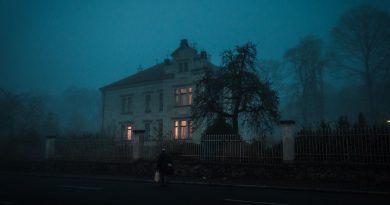Colorado travel: Wake up to camels outside of your hogan
The road from Denver to Conejos County is long, winding and sometimes bumpy, but well worth it for travelers seeking a glamping experience with a twist: an overnight stay in a hogan on a camel farm.
“Does Colorado have like a little bit of everything?” an old friend texted me the other day. I can confirm that it does, and this experience is proof.
I’m a good sport when it comes to traditional camping. As a Colorado newbie, I fall on the amateur end of the spectrum, and tend to tag along with well-prepared friends who can fell trees, traverse rough terrain and generally teach me their ways. But this city girl’s realm of expertise does naturally extend to glamping, or “the activity of camping with some of the comforts and luxuries of home.”
Matt Stalzer‘s property in the San Luis Valley — labeled “Camels and a Yurt” on Hipcamp, an online marketplace for outdoor stays — immediately caught my eye, with a nightly base fee of $110. However, he was quick to correct that, while his company is named Mudita’s Camel Yurt because he used to host guests in one, it’s now been replaced by a “sacred female Navajo hogan.”
“This is Navajo land here,” he added.
The property is tucked near the town of Capulin. The drive from Denver spans four hours, but makes for an impressive road trip.
Running a bit behind schedule, the night was pitch black by the time my boyfriend and I reached the dirt road leading to the property. With our navigation skills put to the test, we only got turned around once before arriving at our destination.
Crediting a friend with the idea of a camel AirBnB, Stalzer, 42, ran with it seven years ago. He and his wife, Meghan, now take care of 20 birds, four donkeys and five camels — with “maybe one camel on the way” — on their 35-acre homestead, which they bought in 2018.
At one point, their source of income stemmed from milking camels twice daily. They no longer sell any milk, but Meghan spins camel wool into yarn, and is starting a side business for her camel fudge.
Lantern in hand, a bundled-up Stalzer first greeted us by the hogan, propane heater roaring inside. With the temperature expected to hit a low of minus 1 degrees that night, he left us well-prepared. A wood-burning stove and a hefty stack of firewood also awaited us within the hard-sided hogan.
Roughly the size of a studio apartment, the space easily accommodates a bed and a couch. The added amenities include a wash basin, propane stove, water jugs, tea, coffee and a French press — the last component deemed a cause for celebration by this caffeine-dependent reporter.
In front of the hogan, an outdoor fire pit stood at the ready for guests who aim to take in millions of stars glinting in the chilly November sky. A clean, lit outhouse — complete with a wooden toilet seat — stood off to the side.
With finicky cell phone service, the stay is an escape from the pull of modernity, lending itself to lantern-lit card games, overflowing charcuterie boards and glasses of prosecco wine instead.
Lauren and Alexander — Denverites by way of California and Texas — called the site a “slice of heaven” in the guestbook. It “provided a great base camp for our adventures,” they wrote in late July.
In the morning, we woke up to sunshine and blue skies outside of the hogan’s window, with a herd of camels peering back at us. Because we drove in at night, the landscape views took us aback, with snow-capped mountains in the distance contrasting the ground’s yellow brush.
My early-bird boyfriend quickly got to work on lighting the stove for my ambrosia, otherwise known as java. My line cook shift started soon after, as I whipped up steak and eggs on Stalzer’s cast-iron skillet. I made a grave mistake — leaving my seasonings behind — but salt and pepper were tucked away for forgetful minds.
We donned our jackets and played camel paparazzi as the chilly temperatures gradually warmed, feeding the females, or cows, hay by hand. Stalzer joined us soon for a farm tour where we got up close and personal with the animals, brushing the camels — no rides allowed.
Originally from the Chicago area, Stalzer’s parents brought him to Colorado as a child in 1986. In his earliest years, a trip to an Illinois zoo inspired his ambition to farm.
Stalzer, who wants to clear camels’ “bad rap,” described the animals as intelligent and loving. He and his wife’s decision to raise them was largely influenced by “the health benefits of the milk,” which Middle Eastern, Asian and African peoples have consumed for centuries, according to WebMD.
The health care website notes benefits, including high antioxidant, vitamin and mineral levels. It’s also “the closest natural substance to a human mother’s milk.”
Stalzer hopes to utilize rewilding — defined as “creating wild, biodiverse spaces” to build up healthy ecosystems — on the property, and eventually turn it into a spiritual retreat. This homestead “claimed us,” he said.
Should others follow in his footsteps? “People should follow their own path, their own intuition, their own life purpose.”
To go
• Mudita’s Camel Yurt
• Drive time from Denver: Around four hours
• Cost: $110 per night
• What you need to bring: Food, glassware, utensils, games, etc.
• How to make reservations: www.hipcamp.com/en-US/colorado/mudita-camel-s-yurt/camels-and-a-yurt
Subscribe to our weekly newsletter, In The Know, to get entertainment news sent straight to your inbox.
Source: Read Full Article





